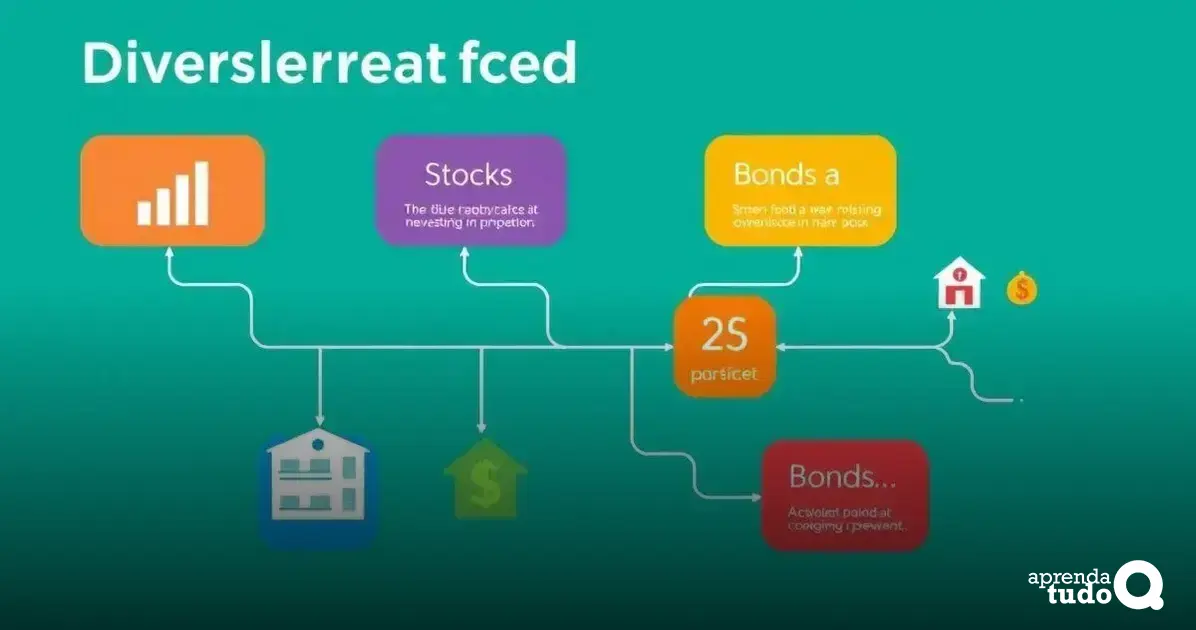Diversifying your portfolio is more than just a financial strategy; it’s a crucial step towards achieving long-term wealth.
In today’s dynamic markets, having a diverse investment approach can mitigate risks and enhance returns.
Understanding Portfolio Diversification
Understanding portfolio diversification is essential for anyone looking to invest wisely. It’s about spreading your money across different types of investments.
This helps reduce risk because if one area does poorly, others may do well. When you place all your eggs in one basket, you can face bigger losses if that investment fails.
By diversifying your portfolio, you can invest in stocks, bonds, real estate, and even commodities. Each of these investment types reacts differently to market changes.
For example, when the stock market dips, bonds might provide steadier returns. This balance helps you keep your finances on a healthier path.
Another key aspect is understanding that diversification does not mean throwing money into random investments.
Rather, it’s about choosing a mix of assets that work together. The goal is to create a portfolio that can weather financial ups and downs while still aiming for growth.
Remember, the more informed you are, the better choices you can make.
Benefits of Diversifying Your Portfolio
Diversifying your portfolio offers several key benefits that can improve your financial security. One important advantage is risk reduction.
By investing in a range of assets, such as stocks, bonds, and real estate, you can protect yourself from significant losses.
When one investment struggles, others can help balance out your overall portfolio performance.
Another benefit is the potential for higher returns. A well-diversified portfolio allows you to tap into different growth opportunities across various markets.
For example, while some stocks may not perform well, others might thrive, giving you a better chance of increasing your wealth over time.
Moreover, diversification encourages you to be a more informed investor. When you explore various investment options, you learn more about the market.
This knowledge not only helps you make smarter choices but also builds your confidence.
As you diversify your portfolio, you become better equipped to navigate financial challenges and seize growth opportunities.
Common Mistakes to Avoid When Diversifying
When diversifying your portfolio, one common mistake is focusing too much on a single type of investment.
Many people believe that investing heavily in one area, like technology stocks, will yield the highest returns.
However, this approach can lead to greater risk if that market takes a downturn. It’s important to spread your investments across different asset classes to ensure a balanced portfolio.
Another mistake is not doing enough research before investing. Some individuals jump into new markets or trendy investments without fully understanding them.
This can result in poor decisions and losses. Always take the time to learn about each investment option, including its risks and potential rewards, to make informed choices.
Finally, many investors forget to review and adjust their portfolios regularly. Just because you have diversified your investments doesn’t mean you’re done.
Market conditions change, and so should your strategy.
Periodically checking your portfolio allows you to reallocate assets as needed, ensuring that your diversification strategy remains effective and aligned with your financial goals.
Investment Options to Diversify Your Portfolio

When considering investment options to diversify your portfolio, one popular choice is stocks.
Investing in shares of various companies allows you to participate in their growth.
By choosing stocks from different industries, such as technology, healthcare, and consumer goods, you can spread your risk.
This means you are not relying on the success of just one sector to achieve your financial goals.
Another effective option is bonds. Bonds are loans that you give to companies or governments in exchange for interest payments.
They typically offer more stability than stocks, making them a great way to balance your investment portfolio.
By having both stocks and bonds, you can cushion potential losses while still enjoying growth opportunities.
Real estate investments also offer an excellent option to diversify. Investing in property can provide steady rental income and potential value appreciation over time.
Whether it’s residential, commercial, or industrial real estate, adding this asset type to your portfolio can protect against inflation and provide diversification beyond traditional stocks and bonds.
How to Create a Balanced Portfolio
Creating a balanced portfolio starts with understanding your financial goals and risk tolerance, which is essential when learning how to diversify your portfolio effectively.
Knowing how much risk you can handle helps you decide what types of investments are best for you.
For instance, if you’re saving for retirement 20 years away, you might afford to take more risks with stocks.
However, if you need money for a house in a few years, you might choose safer investments like bonds.
Next, aim to include a mix of asset classes. A balanced portfolio typically includes stocks, bonds, and perhaps real estate.
You might allocate 60% of your investments to stocks for growth, 30% to bonds for stability, and 10% to real estate for additional income.
This mix can help ensure that when one investment declines, others may perform well, balancing your overall returns.
Finally, regularly review and adjust your portfolio. Markets change, and so do your financial goals. It’s essential to check your investments at least once a year.
This will allow you to make any necessary changes, like rebalancing your asset allocation to match your original plan or responding to market shifts.
Keeping your portfolio balanced is key to achieving long-term financial success.
Conclusion
Diversifying your portfolio is not just a smart move—understanding how to diversify your portfolio is a foundational principle of long-term financial success.
By allocating your assets across various investment types—such as stocks, bonds, real estate, and alternative options like commodities or ETFs—you help spread risk.
This approach increases your chances of achieving more consistent and stable returns over time.
This strategy protects your wealth against market volatility, sector-specific downturns, and economic uncertainty.
Moreover, diversification encourages disciplined investing. It prevents overexposure to a single market trend and promotes balanced decision-making.
To make the most of your diversified portfolio, stay informed about changing market conditions and adjust your asset allocation accordingly.
It’s also important to reassess your risk tolerance regularly as your financial goals and life circumstances evolve.
This may include rebalancing your portfolio annually or in response to major life events.
Whether you are a conservative investor seeking capital preservation or a more aggressive one aiming for maximum growth, a well-structured and diversified portfolio acts as a safety net.
It empowers you to navigate market fluctuations with confidence, build resilience during economic downturns, and stay focused on achieving your long-term financial ambitions.






